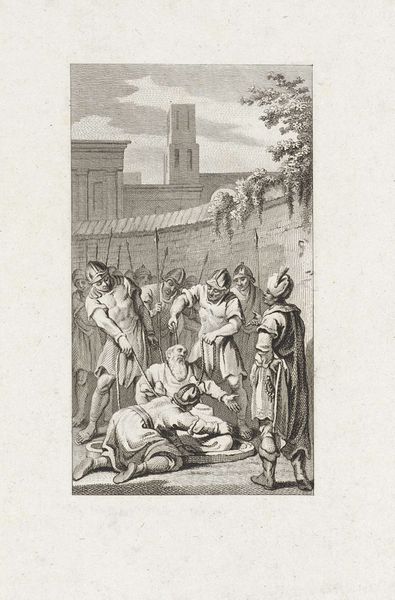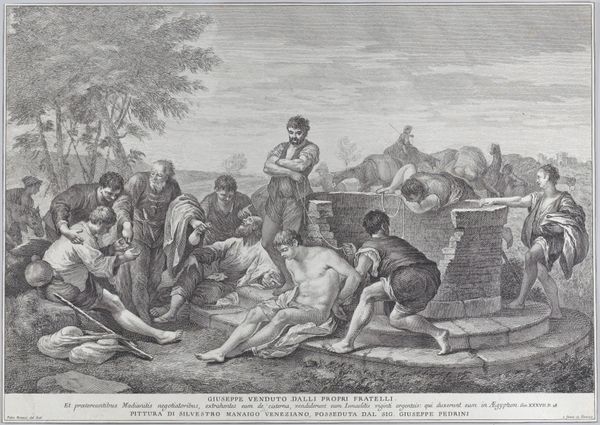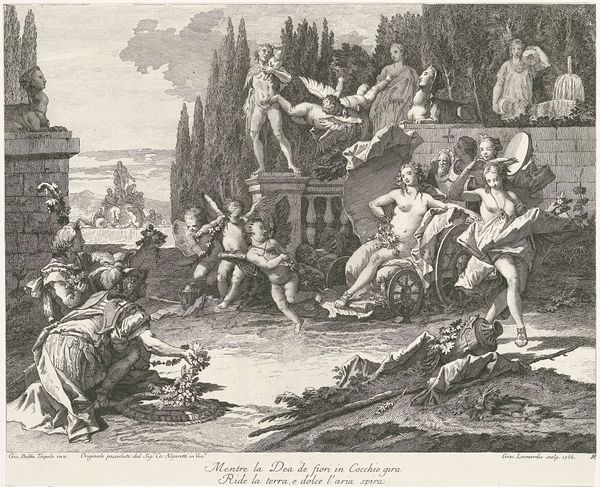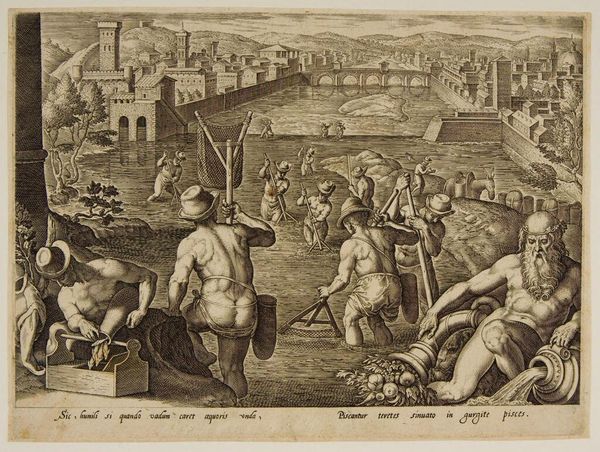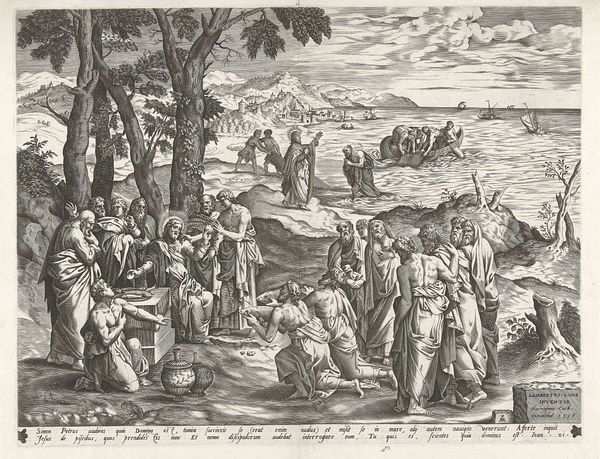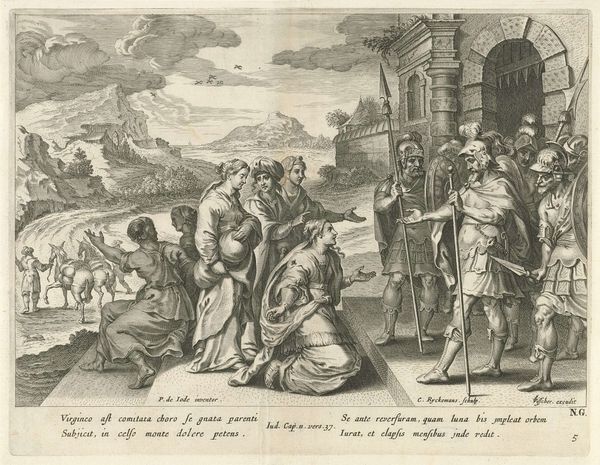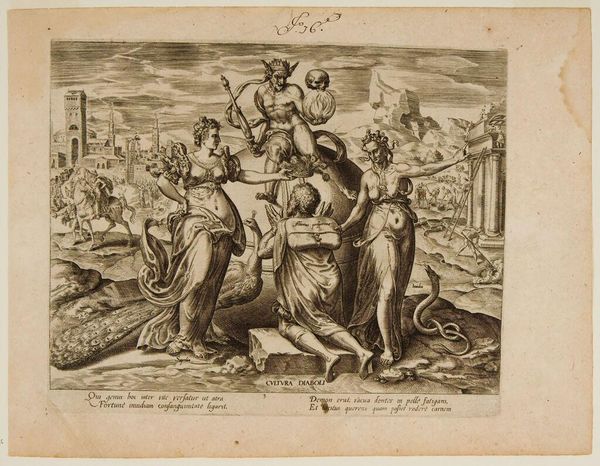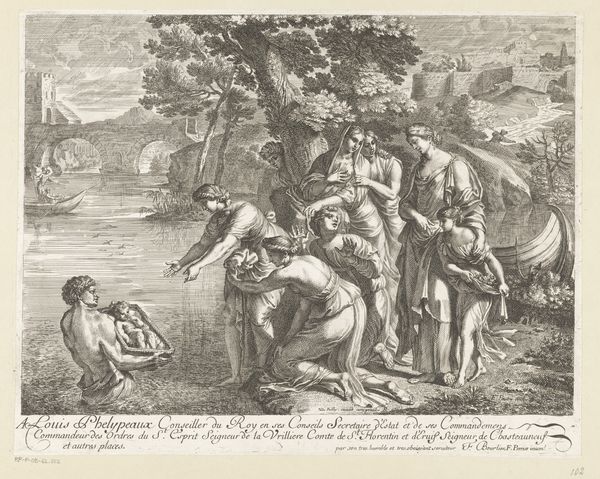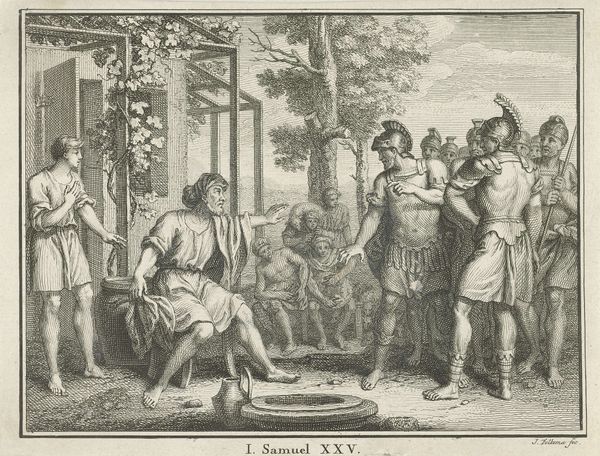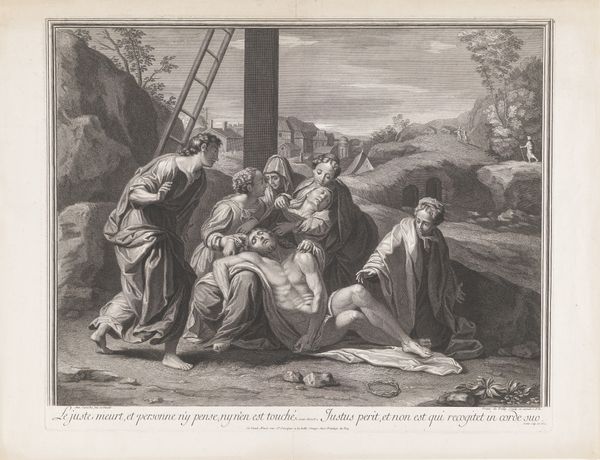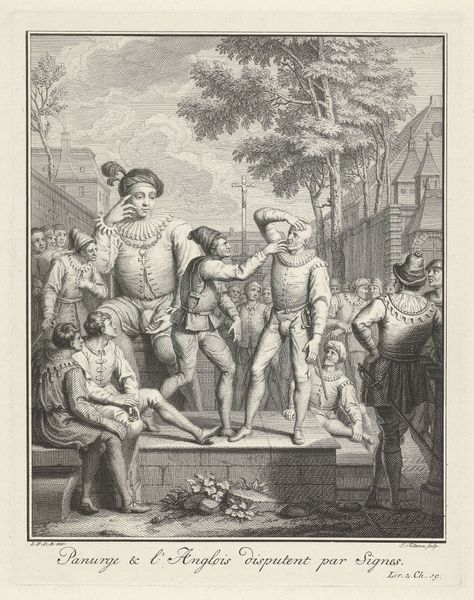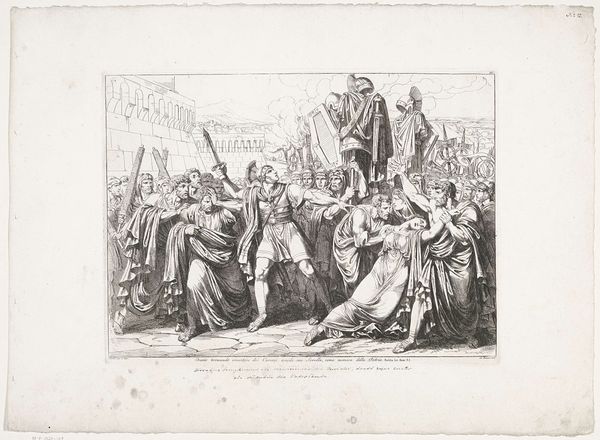
engraving
#
narrative-art
#
baroque
#
landscape
#
figuration
#
history-painting
#
engraving
Dimensions: height 419 mm, width 541 mm
Copyright: Rijks Museum: Open Domain
This engraving from the late 17th century, by Paul van Somer II, depicts the moment when Pharaoh's daughter discovers the infant Moses in a basket on the Nile. This imagery reflects the cultural milieu of the Dutch Republic. The scene is not just a biblical narrative, but also an illustration of power dynamics and divine intervention. Van Somer, working within a society shaped by religious upheaval and colonial expansion, uses the story of Moses to explore themes of leadership, liberation, and cultural identity. Note the classical rendering of the figures, resembling Roman statuary, and the imagined Egyptian landscape. The Rijksmuseum, where this work is housed, provides a context for understanding its reception. Art history is not just about aesthetics; it’s about understanding the social, political, and religious forces that shape artistic production and interpretation. To delve deeper, consider researching Dutch attitudes toward religious minorities and colonial subjects during this period. Such historical context enriches our understanding of Van Somer's work and its place in Dutch cultural history.
Comments
No comments
Be the first to comment and join the conversation on the ultimate creative platform.
